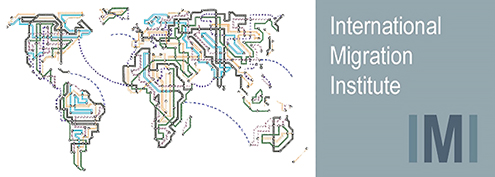Call for Papers
2018 APAD International Conference “Migrations, Development and Citizenship”, Roskilde, Denmark, 23-25 May 2018: http://events.ruc.dk/apad-conference
Panel title: In/exclusion and urban spatial transformations in Africa
Panel convener: Dr Gunvor Jónsson, University of Oxford
Research on social cohesion in African cities has mainly concerned citizens and not international migrants. While migration research in Europe and North America has focused extensively on integration, cohesion and conviviality in multi-cultural and super-diverse cities this has been largely absent from contemporary migration research in Africa (Jónsson & Bakewell 2011). Most research on cosmopolitanism and pan-Africanism has not directly dealt with the inclusion of migrants on the African continent and their transnational and diasporic connections within the continent. There has been a tendency in the literature to emphasise the exclusion – and self-exclusion - of immigrants in Africa. Disputes over who belongs have sometimes culminated in violent xenophobic attacks and expulsions of those deemed foreigners. Meanwhile, observers have long noted that migrants – foreign traders in particular - in Africa may deliberately exclude themselves from participating fully in their host society, for various strategic or tactical reasons (Shack & Skinner 1979; Abner Cohen 1969; Whitehouse 2012). As Landau (2013) points out it is worthwhile considering what migrants in African cities are included into or excluded from. African cities not necessarily characterised by strong social coherence but instead, ethnic heterogeneity, economic disparity, and cultural pastiche. In Lubumbashi for example, the absence of a functional state apparatus means that the society that migrants join is not a coherent one; this raises questions about how new arrivals can be integrated into a society which itself is characterised by tendencies toward disintegration (Ngoie-Tshibambe et al, 2011).
Many residents in the global South are confronting similar processes of rapid urban change, as neoliberal policies and the development of infrastructure for fast-growing cities are causing dislocations and demanding difficult adjustments. In Africa this is reflected in the current massive investments in infrastructure which may take the form of “spectacles” aimed at luring foreign investment, and which may result in gentrification, speculation in land and housing, blocked urban mobility, and marginalisation of small-scale economic pursuits in favour of capital intensive activities (De Jong&Foucher, Melly 2010). Urban space is being transformed through economic activity throughout Africa, both by people who are present and absent in cities. Such urban transformations may produce and reinforce power and wealth inequalities, which ultimately raises questions about which residents – and non-residents – actually belong and what belonging entails. This issue is not internal to members of imagined and moral communities at whichever scale (diaspora, nations, neighbourhoods) but also concerns migrants who are present in African cities and who may claim membership as residents of the city. At the same time such migrants may deliberately refrain from claiming membership; and they may benefit – even contribute to – ongoing urban spatial transformations. For example, autonomous female shuttle-traders in Dakar enjoy the anonymity of the big city and derive a profit from new infrastructural and trading landscapes (Jónsson 2016).
This panel proposes to look at inclusion and exclusion of migrants in African cities, in relation to urban spatial transformations. Presentations may address both historical and contemporary processes; consider both imagined, discursive, and embodied practices; and may focus on diverse types of human mobility and urban spatial transformations in an African context (including north of Sahara). Empirically based studies are particularly welcome - in either English or French.
Abstracts of no more than 300 words should be sent to gunvor.jonsson@qeh.ox.ac.uk by Friday 12th of January 2018. Authors will be notified of selected papers by Monday 15th Jan 2018.

